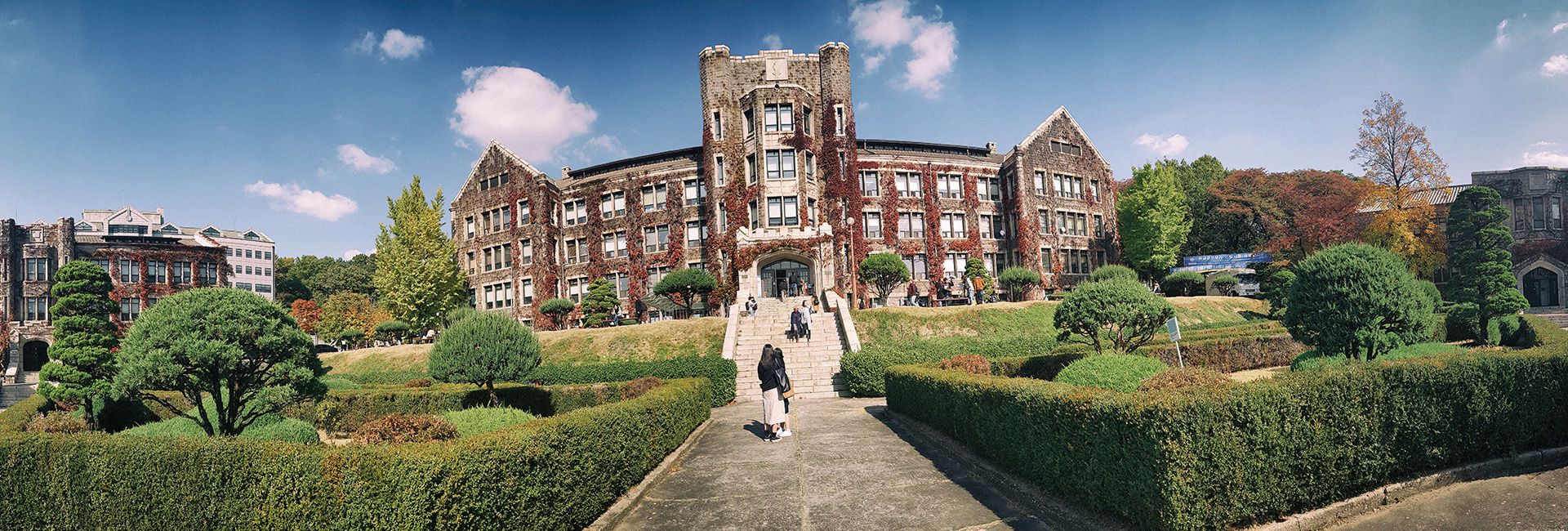Click through to Best of 2020 to discover the Newsworthy articles with greatest impact: whether by highest page views, social media engagement or reportage on important social issues.
Every November, final-year South Korean students take the high-pressure sooneung exam. Their chance to live 'the Korean dream' depends on achieving a perfect score.
THE air was too thick to inhale. My limbs trembled. Everything seemed to be shaking yet there was no earthquake. I was nervous despite all my preparations, from the silk suit to my acne-scar makeup. I felt the rush of adrenaline, like a soldier about to storm into no man's land. This interview could set the course of my life, for better or worse, in stone.
I sat in a room, alongside other applicants, waiting my turn. We were the lucky few who had managed to clear the first checkpoint of enrolment – an essay application – on the road to Korea University, one of South Korea's three elite universities.
The interview had come only after months of agonised essay-writing effort, followed by a torturous wait for their emailed reply. At last the reply came and they thought I was worthy, sparking a glimmer of hope that I would be chosen for the greatest life opportunity offered in my country. I heard my name called. As I opened the door, I saw three elderly figures, two men and a woman, seated directly across from me. My heartbeat spiked as I took in these people who could change my fate. I wondered if even twitching a finger could be a mark against me. I was directed to a seat and the interview began.
The questions were not unexpected. Why did you choose this university and major? What is your goal in life? It seemed to be going well. Then came the twist.
"So, Mr Jeong, I take it that you studied abroad? In the United States?"
"That is correct, sir," I replied
"And according to the transcript, it seems that you have a couple Cs for your grades in second semester of your third year. Could you explain why?"
I had a sense of foreboding. University administrators in South Korea are finicky about grades, especially administrators from SKY, the country's three most elite academic institutions (Seoul National, Korea and Yonsei universities). He stared at me as if he had sniffed out a North Korean spy. The chill ran down my spine. I had hoped they would overlook the Cs, but no.
As the guardians of Korea University, one of South Korea's most esteemed universities, nothing escaped them. I explained I had tried to immerse myself in the lifestyle unique to America as graduation closed in. "I see," was all he said. His satirical tone made my heart sink. The interview ended precariously.A couple of weeks passed. I logged in to see the result of my admissions interview. On a bare white window there was only one line of text in a font of thin black letters.
'Sorry, but you won't be joining us.'
My heart sank all the way down to my stomach. And just like that, the flickering optimism I had harboured of a life-changing admission was extinguished.
I swallowed at the fact that the dream life – of a man with a comfy desk job, six-figure salary and a family, the aspirations of every South Korean man – had likely been denied me in that one dispassionate sentence. Then, I had a graver concern: my parents' imminent fury, fuelled by my betrayal of their expectations.
Living in 'Hell Joseon'
SOUTH Korea is a society gripped by academic fever: a society where perfectionism is the standard; a civilisation where a glittering future requires a diploma from one of the SKY universities; and a community where elders are relentless in driving their children to higher and higher goals. That relentless pursuit of perfection has seen the extraordinary rebirth and reinvention of a country that had been reduced to ashes, it has also birthed the country's infamous moniker: "Hell Joseon".
Imagine grounding #flights so that high school seniors can take an exam? Intense pressure to get into a top… https://t.co/pRBoAtSBju— Terri Morrison (@Terri Morrison) 1542374918
Hell Joseon is a pejorative term coined by the country's disenchanted youth. They have grown restless with this suffocating lifestyle, saying the system is reminiscent of life under the Joseon Dynasty, a 500-year-old feudal Korean society with a caste foundation that only ended with brutal annexation and subjugation by Imperial Japan in the early 20th century.
"During the Joseon Dynasty before 1910, the country started to rot, started to crumble, and it suffered a crushing collapse. They [the monarch and nobility] drove the country to ruins," said Dr Seung-Ho Kwon, executive director of UNSW's Korea Research Institute.
Fixed stations in life dominated the dynasty. The classes of royalty, nobility and commoner lived within their own circles and the notion of those circles intersecting was unthinkable. The idea one might climb higher in society, stepping beyond the circle into which you were born, was sacrilegious.
The yangbans – Joseon's ruling class – showered themselves with fine clothes, land ownership and substantial government stipends, while the commoners could only look on. However, these extravagances were not entitlements, per se, they had to be earned and maintained individually, using academic qualifications to build their credentials and fortunes.
During the Joseon Dynasty, only yangbans had the freedom to seek education, making them the only class eligible for the career-defining gwageo – Joseon's civil service examination. This exam assessed academic aptitude and thus determined the role each examinee would play within the kingdom. In a narrative very familiar to 21st century Korean youth, the results would be crucial – personal fame and wealth along with family honour were at stake.
"The yangban had a monopoly on literacy, but it wasn't something easy on the eye. It required tremendous time and effort to master," said Kwon. The gwageo exam was written entirely in Hanja script, which includes a thousand variations of Chinese characteristics. Proficiency in these characteristics was expected within the yangban community, however, absorbing and retaining all the variations was a Herculean task.
With their status on the line, yangban parents pulled out all the stops to ensure their sons' success, sending them to institutions where they would commit themselves to reciting and memorising Hanja. Joseon society had its own version of schools with seodang (primary school), seowon (high school), and Seonggyunggwan (a cram school solely used to prepare students for the gwageo).
The schools only accepted yangban boys but the cost of tuition was equivalent to several months' food supply, weeding out those from poorer yangban households. Meanwhile, the exclusion of commoners meant they were shackled to a life of dirt and disdain that persisted over centuries.
It isn't uncommon for students who fall short to mourn as if they've received a death sentence, which in a sense they have, the death of their Korean Dream.
That was, until the 1910 annexation of Korea by Imperial Japan brought with it a class twist. With the official surrender, the Japanese would take control the Korean peninsula for the next 35 years. During their occupation, they replaced Joseon's yangban-exclusive education system with their own public education system, in large part to erase Korean culture, but it had the effect of opening the gate to all would-be scholars, regardless of class.
The commoners' long forbidden dreams of education were suddenly an attainable reality. For the older generation, it was too late to break free of their peasant heritage, so they placed their hopes and dreams upon their children who were eligible for the new education system.
"Every parent's thoughts are the same: their children's succession," said Kwon. "Parents are thinking, 'I may be ill-educated and miserable, but I don't want you to go through the same thing I did.'"
Korea was eventually liberated from neighbouring Japan in 1945 but the celebration was short-lived, as a tank assault from the north soon triggered a three-year civil war. By the time an uneasy ceasefire arrived in 1953, the country was divided and in ashes. The north was blessed with all the industrial resources and experts required to modernise and rebuild. In the south there was little but fields.
Rather than accept their dire economic reality, South Koreans were determined to remodel their society into an industrial powerhouse. Move the clock 60 years forward, South Korea – dubbed the "Miracle on the Han River" in a nod to Germany's "Miracle on the Rhine" post-war economic renaissance – has achieved its vision and left North Korea far behind, now boasting a Gross Domestic Product 99 times greater than Pyongyang's.
"Since the '60s, South Korea pushed towards industrialisation and education. However, it was without resources and expertise like North Korea. It had only labour strength," said Kwon. "In the beginning, the government focused on education to produce skilled labourers. Take Hyundai Heavy Industries for instance. Before Ju-yung Chung [Hyundai's founder] built the factory at the dock in Ulsan, they would gather people who only knew how to mend holes in copper kettles to educate them on how to weld together a hull of a ship. Basically, it was a vocational training for the industrial labourers. But still, among many forms of training, some required a higher level of education, such as [that provided by] Seoul National, Korea, and Yonsei [universities]."
Enthusiastic cheering from 200 students for seniors taking college entrance exams in South Koreawww.youtube.com
Exam that stops a nation
HYUNDAI'S Chung may have been the son of a peasant farmer who rose to become one of the world's wealthiest men without a university education, but his remarkable rise was an exception to the rule in South Korea. For most in the new Korea, higher education offered the the gateway to fame and wealth, which brings us back to the importance of SKY. Despite a mature, broad-reaching higher education system with 43 national and more than 180 private universities serving local and international students, to the fastidious South Korean general public, with an eye to prestige, it can feel like there are only three universities – Seoul National, Korea and Yonsei – worth their attention.
Every ambitious Korean student (and their parents) seeks a SKY degree on which to build their Korean Dream of a penthouse in the exclusive Seoul suburb of Gangnam, an exotic imported car and a picture-perfect spouse and children that will testify to their personal successes and superiority. Yet, very few will attain it.
The "Gangnam-Style" dream can only be realised with high income from a prominent profession. The simplest way to gain entry into such a profession, is with at least a Bachelor's degree from SKY. The benchmark for consideration for entry into SKY is a top 10 performance among your school peers in addition to a close to perfect mark on the CSAT exam.
The CSAT (College Scholastic Ability Test), colloquially referred to as sooneung, is the standardised exam acknowledged by every university in South Korea as the measure of an applicant's academic aptitude. It is a ritual held every November nationwide. (This year, due to COVID disruption, the exam will be held on December 3. Even students with COVID will take the test.)
Your sooneung score determines which universities you can enrol in. Since this fateful rite of passage is a one-shot, it is paramount that all examinees can reach their designated test sites on time. Everyone understands this. To ensure that punctuality, the police are dispatched to the streets to provide clear passage and escort any examinees who are racing against time to reach the test site. Prior to COVID, flights to Seoul were rerouted or grounded during the eight-hour exam period to create a tranquil environment for the examinees. By law, businesses open an hour later than their usual schedule.
In the exam room, students draw on their years of cramming to mark the correct bubble on the multiple-choice test. Korean is the only official language of South Korea but proficiency and comprehension in English is also tested in sooneung. How hard is it? The complex English questions famously baffled a would-be examinee with a Harvard doctorate. The Youtube video of his attempt has been viewed more than 2 million times. To expect young people to be more fluent in a language than a native scholar is a measure of the phenomenal standard set in sooneung.
Given that degree of difficulty, it isn't uncommon for students to fall short of the perfect mark needed for SKY, leaving them to mourn as if they had received a death sentence, which in a sense they have, the death of their Korean Dream.
Then come the family recriminations.
Cram school culture
NO KOREAN parent wants to imagine a scenario in which their child is rejected by SKY as their child's future success and the family's dignity are at stake. To guarantee that happy ending, parents school their children from a young age to be SKY-ready by sending them off to hagwon (cram school) where they will be groomed year in, year out to conquer sooneung. Hagwons are private cram schools specialising in specific subjects, such as maths, English, science and music. It is normal for Korean students to spend three to four hours per day in hagwon classes after school and occasionally on weekends.
My life played out a little differently to most Korean children. From age 10 to 25, I was educated in the United States. However, prior to that move, I attended an English hagwon during my "grade school" days. The three-hour classes were held every weekday after school. It was an unforgiving environment which demanded perfection, from the number of pencils (three) you had to bring to class, to the daily quiz result (no less than 90) you had to score. Failure to comply would result in three whacks on the palm with a centimetre-thick stick and supplementary lessons. I was once held back an extra three hours after I did not pass the daily quiz and was only allowed to leave when the hagwon closed at 10pm.
Corporal punishment was culturally embedded in the Korean community as a form of youth discipline. The cane was called the "stick of love". I was six years old when my father took it upon himself to teach me the multiplication table. From times two to times nine, I was to recite them without a single error or I got the "stick of love" charged with the kinetic force of his frustration. Under a civil law unrevised since 1960, corporal punishment could be practised by parents and teachers alike as a negative motivator, instilling a tangible sense of dire consequences for substandard performance. Article 915 of the civil law stated "legal guardians and parents can take necessary disciplinary actions on a child for the purpose of protection or education." In the minds of Korean parents, these extreme tactics were necessary to ensure the success of their children, to gift them greater happiness (through wealth and fame) than they themselves experienced.
The Korean government called an end to the practice, introducing a ban on corporal punishment in schools in 2011 after video of a teacher beating a student went viral and then, in 2019, controversially extended that ban to include parents disciplining their children using corporal punishment.
Dirt spoon generation
THE Korean commoner had been exploited and persecuted for centuries – first by the ruling yangbans, then by foreigners such as the Japanese with superior power and knowledge – consolidating their world view, and that of future generations, that it was a case of eat or be eaten.
In South Korea, money and authority are seen to give you an inalienable right to exercise contempt, leading to gapjil (bully culture), where arrogant and authoritarian behaviour towards those in lower positions results in abuse. Most people rise through the ranks by their résumé and very few reach the level of chief executive or chairman without also being an alumnus of SKY. Thus, getting into SKY not only offers a pathway to the Korean Dream, it also acts as a deterrent to exploitation by others.
Everyone wants to be at the top of the food chain but only a few will achieve it, creating a socio-economic disparity, described as the "spoon classes". The Gangnam children who can afford to be frivolous thanks to their families' six-figure incomes are known as the "golden spoon generation". They are confident about their future: that their chaebol-executive fathers will provide any necessary additional assistance money can buy to bump up their grades to SKY standard; or that they can capitalise on their social connections with the country's most influential figures to reserve a lucrative career path.
In one notorious 2018 incident, Choi Soon-sil, a confidante of then president Park Geun-Hye, was jailed for misusing her friendship with the Korean leader to bribe Ewha Women's University to have her daughter enrolled into the university when it was alleged she had barely attended high school.
Speaking of these golden spoon students, Kwon, of UNSW's Korea Research Institute, said: "If you look at [Seoul National University] now, almost half of the students are from Gangnam. They received private education and have paid their entire tuition in advance".
Meanwhile, those whose parents cannot afford the hagwon cram schools are known as the "dirt-spoon generation". With the towering national academic standard proving difficult to meet without extra lessons from hagwon, their futures are much less certain.
What they don't tell you
ONE hundred years after the Joseon caste controls were torn down by annexation, and more than 75 years since the country broke free of its Japanese oppressors, South Korea has come a long way from its dark past. Yet some similarities are striking. The sooneung is the modern counterpart of gwageo with its pivotal societal role, challenging the young from both eras to offer up their youth to education. Enrolment today in a SKY university is a sign a student has achieved a perfect sooneung mark, which protects the family honour while promising riches and fame, just as the gwageo civil service exam did for the yangbans.
I did not sit the sooneung exam as I was living in the United States at the time, completing my undergraduate degree at the University of Illinois. I applied to all three SKY universities. Knowing how they cherrypick their students, both my parents and I were nervous of my chances. I made backup applications to universities overseas, including UNSW.
It was a roller coaster. I received an acceptance letter from UNSW. My parents were pleased. Then came the rejection letters – "Sorry, but you won't be joining us." – first from Korea University, then Yonsei and Seoul National. My parents were livid (and reluctant to fund any overseas study).
They finally relented, I came to Sydney. My Korean dream won't be lived Gangnam style. But what no one likes to talk about amid the frenzy to get into SKY, is how hard it continues to be, how hard it is to get a chaebol job, even with a SKY degree. After graduation, these super-smart SKY alumnus are still all jostling, with each other, for that elusive Korean dream.






As a checkout chick, I'm used to rudeness. But I can't bear the threats and violence